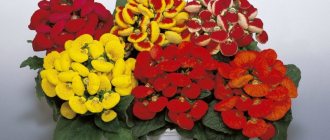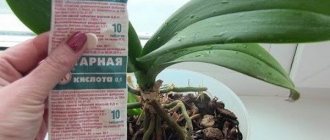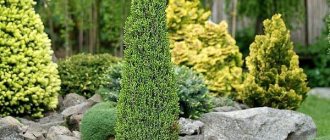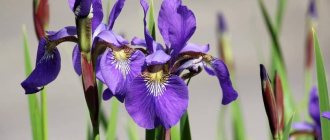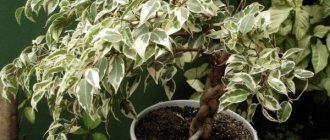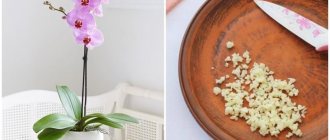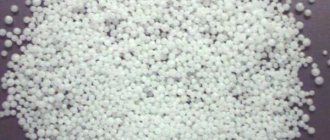What is hydrogel
Aqua soil or hydrogel is a moisture-absorbing polymer. It can be powdered, liquid and granular, transparent or colored. Most often it comes in the form of small balls. When it comes into contact with moisture (water, liquid fertilizer), aquagel absorbs it, swells and increases in size, becoming like jelly.
Application of avagrunt
One gram of hydrogel absorbs 200 – 300 ml of liquid. After swelling, the balls become peculiar reservoirs of water, from which the moisture gradually evaporates or becomes a source of moisture for the soil and plant roots. The shelf life of the gel depends on its type and manufacturer, on average it is 5 years.
Polymer composition: carbon dioxide, water, ammonium and potassium salts. After the expiration date, they completely decompose and dissolve. These components are harmless to soil and plants. Aqua balls are not “afraid” of drying out, freezing and thawing. After the level of humidity and temperature is restored, the hydrogel for plants quickly restores its properties:
- retention of moisture and fertilizer solutions;
- prevention of cracking of the soil surface;
- moisturizing, improving soil structure;
- acceleration of the flowering and fruiting period of plants.
Types of hydrogel beads
Depending on the structure, appearance and purpose, there are 3 types of aquagel:
- Soft – colorless hydrogel. Rarely used on its own, more often mixed with soil. Used for growing indoor flowers, rooting cuttings, germinating seeds, planting garden and garden crops. Plant roots easily penetrate through soft water granules and feed on moisture.
Soft – colorless hydrogel
- Dense (aquasoil) – decorative hydrogel. It comes in different shapes and colors, and may contain sparkles and rhinestones. Used as a filler for vases with fresh flowers (instead of water), as well as to create colorful compositions with indoor plants.
Hydrogel for flowers in a vase and pot
- Liquid – looks like soft gel balls for flowers. After contact with water it does not swell, but dissolves in it. Rarely used, mainly for soaking seeds. The polymer promotes their rapid germination and improves germination. Liquid hydrogel is not used for seed germination. It envelops them and blocks the access of oxygen to them.
Hydrogel for soaking seeds
How to sprout greens using hydrogel
According to doctors, daily consumption of greens helps maintain health and youth for many years. And it is quite obvious that freshly picked greens are the healthiest. In summer it is grown in garden beds, but in winter you can create a small “vegetable garden” on the windowsill.
Before you begin, prepare:
- seed;
- hydrogel;
- containers for sowing.
After preparing everything you need, proceed according to the instructions. For the convenience of site visitors, it is presented in table form.
Table. DIY greens in hydrogel.
| Steps, photo | Description of actions |
How to water aloe at home
If experienced gardeners know well what conditions aloe needs, then a beginner may find the growing technology and providing proper care quite complicated. For example, it will be useful to learn how to water aloe at home.
Video – Tips for growing in hydrogel
Flower lovers have probably noticed beautiful bright balls in glasses or vases on the shelves of flower shops. This know-how appeared in gardening recently, but the product immediately became popular among gardeners. Beautiful and bright balls are a hydrogel for plant care. What is this innovation, how to use it correctly and what should you consider when buying hydrogel for plants?
Growing plants in hydrogel
According to the instructions, hydrosoil can be used dry or soaked. Both forms of the polymer are devoid of nutrients and cannot provide plants with conditions suitable for growth and development. For this reason, experts recommend using them not on their own, but mixing them with soil. The ratio of hydrogel and soil is determined by several criteria: soil quality, conditions for planting and growing green spaces, and frequency of watering.
Lettuce grown in aqua soil
Recommended proportions: for dry polymer – 1 g/1 l of soil, for soaked polymer – 1 tbsp/1 l of soil. Swollen granules are used for growing potted plants, dry granules are used for garden crops. It is not recommended to use hydroballs when planting drought-resistant flowers - orchids, cacti, succulents.
Germination of seeds
Seeds germinated in hydrogel
How to germinate seeds using hydrogel:
- Fill the granules with water and leave to swell for an hour.
- Drain in a colander to remove excess liquid.
- Grind the swollen balls with a knife, blender or grind through a sieve.
- Place the gel-like mass on the bottom of a wide moisture-resistant container, layer thickness - 3 - 5 cm.
- Distribute the seeds on top, bury them a little into the gel with a match or toothpick.
- Cover with film and place in a warm place. Ventilate periodically.
- Moisten the gel pillow when reducing its volume by 30 - 50%.
- When the first leaves appear on the seedlings, plant the sprouts along with pieces of hydrogel into separate containers with soil.
Growing seedlings
Growing seedlings using hydrogel
There are two ways to use aquagel for growing seedlings:
- Mix polymer balls with soil, ratio – 1:4. Fill the containers with the mixture and plant the seedlings. The good thing about this method is that it is easier to care for the seedlings: the number of waterings is reduced by 15–20%.
- Spread the soaked aqua soil for flowers along the bottom of the container without drainage holes, the layer thickness is 1.5 cm. Fill the rest of the space with the prepared soil mixture, plant the seedlings into it. This method has two advantages: reduction of watering, development of not a superficial, but a deep root system of seedlings.
For indoor plants in pots
Using hydrogel for a flower in a pot
There are two ways to use gel balls for growing potted plants: mixing with soil when planting a flower or adding an already planted crop to the soil. How to use hydrogel when planting indoor plants:
- Fill the aqua balls with settled water and leave to swell for an hour.
- Drain off the excess liquid and mix the granules with the soil mixture. Proportions – 1 tbsp. aqua soil/1 liter of soil.
- Fill the pot 2/3 full, place the flower on top. Spread the roots, add the remaining mixture, tamp down a little.
How to add hydrogel beads to a pot with an already planted flower:
- Using a simple pencil, make indentations in the soil that reach the root system of the plant.
- Fill the holes with dry gel granules, consumption – 1 g/1 l of soil.
- Water the flower.
- If, after swelling and increasing in volume, the balls come out to the surface of the soil, sprinkle them with 1–2 cm of soil.
- When the roots of the flowers grow through the gel (after 1 - 2 weeks), reduce the number of waterings by 5 - 6 times.
Hydrogel for flowers without primer
Using aquasoil
Ficus, dracaena, chlorophytum, spathiphyllum, and shefflera grow well in aquagel without soil. How to grow them correctly:
- Fill the granules with distilled or settled water and leave to swell for 1 – 3 hours. Drain off excess liquid.
- Rinse the root system of the flower thoroughly.
- Place 2/3 of the swollen gel balls at the bottom of transparent containers (glass vases, glasses), place the plant on top, straighten the roots, add the remaining hydrogel.
- Water the flower when the volume of granules decreases by 30 - 50%. Use only settled or distilled water to prevent the appearance of plaque and bacteria.
Main uses of hydrogel
There are several ways to use polymer granules; let’s take a closer look at each of them.
Table. Methods of using hydrogel.
| Name, photo | Description |
Note! Hydrogel is an environmentally friendly material that stimulates crop growth and has a positive effect on soil quality.
Video - How to germinate seeds with hydrogel
Advantages and disadvantages of application
Pros of using aqua soil
Pros of hydrogel for plants:
- high moisture-retaining properties;
- the ability to maintain substrate moisture for a long time;
- accelerating the growth of seeds and planting material;
- preventing the leaching of nutrients and microelements from the soil;
- supplying the root system and seeds with oxygen due to loosening the soil;
- safety for plants and humans;
- possibility of storing unused hydroballs in the refrigerator;
- preventing moisture stagnation and root rotting;
- reduction of crop watering;
- Possibility of use in open ground, greenhouses and home conditions;
- aesthetic appearance;
- ease of use.
Disadvantages of hydrogel beads:
- the impossibility of using seeds with a leathery shell (sweet peas, beans, legumes) and plants with massive roots for growing;
- the appearance of mold on balls due to prolonged exposure to sunlight;
- impossibility of reuse;
- lack of nutrients.
Reviews from young mothers
Mothers of young children leave the most enthusiastic reviews about hydrogel balls. They note that playing with them holds children’s attention much longer than other toys. They even leave the children to play (which is not a good idea) while they go about their business. It is unknown how many pellets were eaten during these activities. But since hydrogel balls are tasteless, we can assume that it’s not much.
Parents talk about the educational games they play with their children. This is a more rewarding activity. Hydrogel can be especially useful for children with developmental problems.
Negative reviews
Some users say that flowers “planted” in hydrogel balls soon disappeared or their condition worsened. Others explain this by saying that the colored hydrogel granules are not intended for growing flowers.
Some users doubt whether the brightly colored balls made in China will harm the child's health. There are no statistics or other information about the dangers of the balls. Therefore, each parent decides for himself whether to buy these toys for his child.


